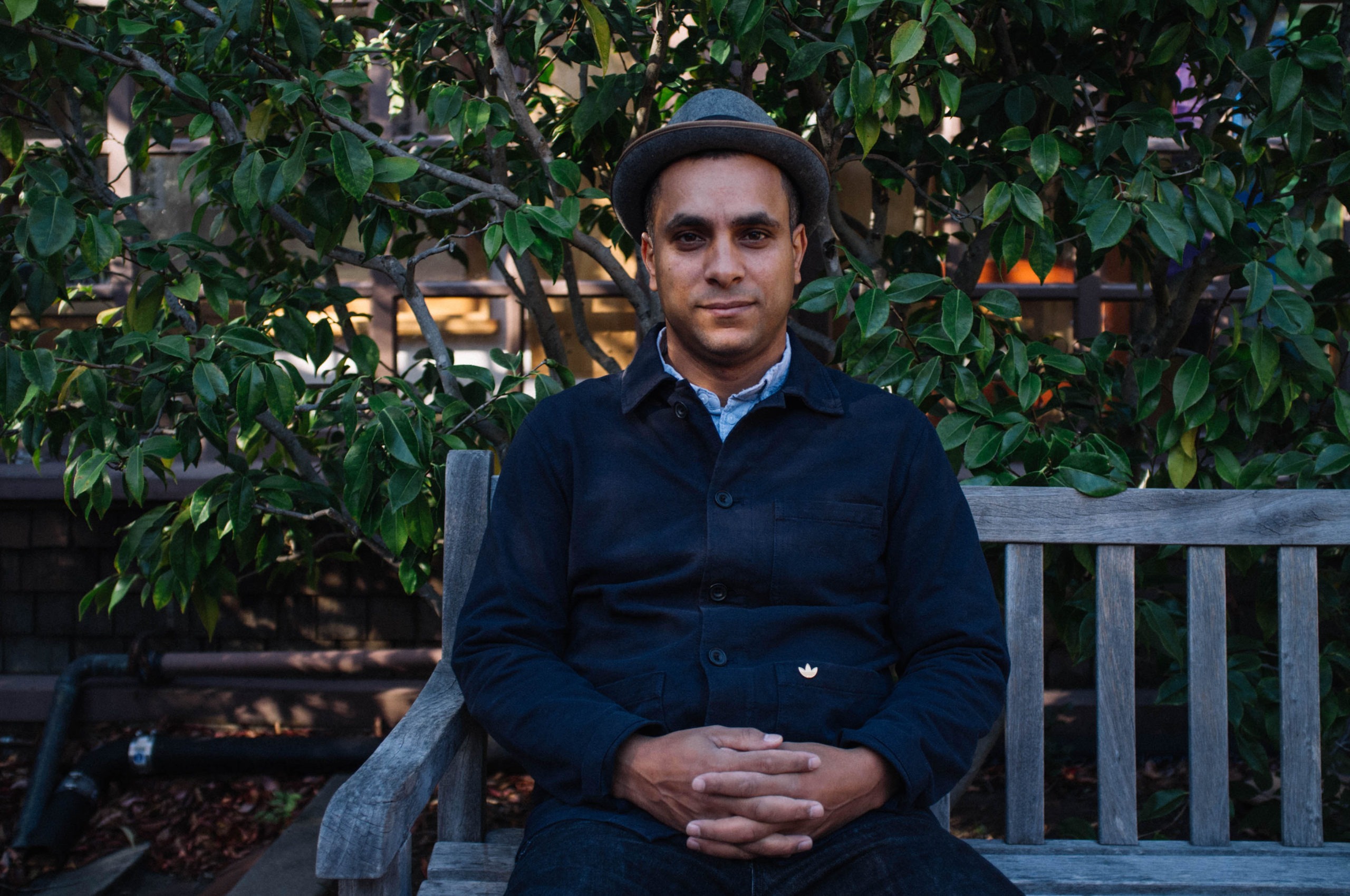
Photo: Clara Mokri (’21)
Wesaam Al-Badry paid an unusual price for his first camera: a bag of marbles and a button-up shirt. As a nine-year-old in a Saudi refugee camp, Al-Badry was bartering with another boy for a clunky Pentax K1000. It came without film.
“I ran around the camp, pointing it at everything,” he says with a chuckle. “That’s how I learned framing and composition.”
Al-Badry, a second-year master’s student in multimedia at the Journalism School, is this year’s recipient of the Jim Marshall Fellowship for photojournalism. The $10,000 fellowship is named after famed celebrity photographer Jim Marshall, who through the 1960s and ‘70s gave the world iconic photographs of musical trailblazers such as Jimi Hendrix, Johnny Cash, and The Beatles. The fund was created in 2015 after an exhibit of Marshall’s work at the School’s Reva and David Logan Gallery of Documentary Photography.
“The fellowship is such an important moment of recognition for me as a photographer,” Al-Badry says. “For every time I’ve been told ‘no,’ this ‘yes’ means something.”
He was only seven when his family fled Iraq in 1991 during the First Gulf War. When they entered the Saudi refugee camp, Al-Badry recalls feeling isolated and exposed. His mother gave her five children the same birthdate, January 1st, to avoid any potential slip-ups. Al-Badry’s six-day-old sister, Shams, was named by an immigration officer filling out forms.
“Being stateless, homeless, you have no rights,” he says. “When I got my camera, people didn’t mind it, because they knew I was just a kid trying to save himself.”
When Al-Badry’s family moved to Nebraska in 1995, he left his camera behind. Living in a low-income project next to a plastic factory in Lincoln, Al-Badry recalls struggling to adjust to a new language and community. In high school, he tried to enroll in a photography course. But the teacher wouldn’t let him, because his parents couldn’t afford equipment insurance.
“I never stopped thinking I was a photographer,” he says. “But that moment kept me out for the next 15 years.”
Throughout his twenties, Al-Badry worked a slew of blue-collar jobs: packing meat, operating forklifts, removing asbestos, laying concrete, building train axles.
“That’s where I get my work ethic,” Al-Badry says. “I channel the poor working-class mindset into everything.”
In his late twenties, while still working in a factory, Al-Badry found his first creative foothold in over a decade: a photography night class at a community college. The work he produced in this course, including a photo essay about his mother, earned him admission to the San Francisco Art Institute. In 2018, he received a BFA in photography.
Al-Badry believes that his upbringing draws him to dispossessed, overlooked communities. Whether he’s photographing in Appalachia or Richmond, Calif., Al-Badry makes a point to begin every interview without his camera: introducing himself, establishing common ground, and observing where people feel most comfortable. Once he does pick up his camera, he works to capture his subjects’ dignity in their natural environments, “facilitating” their self-expression, rather than telling them how to pose.
“I like shooting from below, to show people who are larger than life,” he says.
Al-Badry’s work has appeared in The New York Times, CNN, Al Jazeera America, Forbes, Vogue, and other outlets. He has photographed the families of Bay Area gun violence victims, Flint, Mich., water crisis victims, and communities recovering from fires in Paradise, Calif. In 2019, his photographs of a Native American family in North Dakota earned him UC Berkeley’s Dorothea Lange Fellowship. In his studio in Oakland, he also paints and creates multimedia art. Last year, Al-Badry’s Al-Kouture series was featured in the de Young Museum’s Contemporary Muslim Fashions exhibit. Now, he’s developing his thesis project, which follows everyday life in Appalachian communities.
“Wesaam’s creative juices are undeniably always flowing and have provided him with a constant flow of ideas and stories that he is compelled to report on, in photography, video and multimedia,” said Ken Light, UC Berkeley Journalism’s professor of photography. “This made him the perfect candidate for the Jim Marshall fellowship. Jim was always in motion, working on stories and never letting anything or anyone get in his way, a perfect match.”
Al-Badry knows firsthand that the camera-wielder risks imposing narratives. Cringing, he recalls watching vans full of journalists arrive at his refugee camp, “asking to photograph the baby with the runny nose, or with the visible physical scar.” He hopes that his work will combat voyeuristic photography and illuminate lived experiences.
“This has been my driving force from day one,” he says. “I don’t photograph subjects. I photograph people.”
By Brett Simpson (‘21)
Support the next generation of documentary photographers today.
